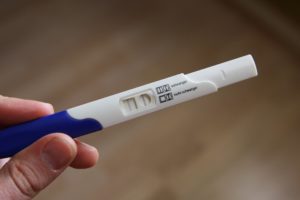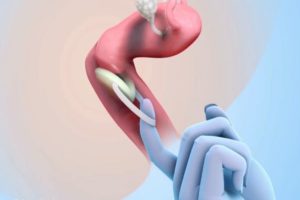Are you thinking of getting pregnant? Then it is time to get to know the big O: ovulation. Just as menstrual cycles are distinct for each female, so is ovulation. By learning to recognize its signs, you will be able to time sex with your partner to increase the chances of becoming pregnant accordingly. But even if you don’t try to conceive right now, having a better understanding of signs of ovulation can give you a clearer picture of your menstrual cycle and help you spot any abnormal symptoms of ovulation down the line. Read on for all the ovulation need-to-know info, from charting your menstrual cycle to seeing the signs of imminent ovulation.
What is Ovulation?
It occurs when the ovary releases the egg. One or more eggs between your monthly phases are released from the ovaries.
Usually,15-20 eggs mature in the ovaries, and the ovarian follicle releases the ripest egg. The egg will only be released when it is fully mature. It then goes down the Fallopian tube connecting the ovaries with the uterus. The egg meets the sperm, if available, and is fertilized in the Fallopian tube. The hypothalamus, which is a part of the brain, controls ovulation and hormonal release. It is the most fertile time for a female.
When does ovulation occur?
Usually, it usually takes place halfway through your menstrual cycle, or around day 14 of the average 28-day cycle from the first day of one period to the first day of the next.
But there is a broad range of normal here, as with everything related to pregnancy, since cycles can last anywhere from 23 to 35 days, as well as your own cycle and ovulation time may differ slightly from month to month.
When are you most fertile?
While some believe that on any day of the month you can conceive, and others say the opposite — that on the exact day of ovulation you have to have sex— both are actually false. In reality, your cycle has a six-day “fertile window”— the five days leading up to ovulation through the ovulation day. And of those six days, when you are most fertile, the optimal time frame to conceive is two to three days before ovulation and the day of ovulation itself. It is viable for about 12 to 24 hours after your egg has been released.
Causes Of Ovulation:
At the beginning of the menstrual cycle, the pituitary gland in the brain produces the follicle stimulating hormone. This hormone stimulates the production of mature eggs by the ovaries. The follicles are cavities filled with fluids in the ovaries. Every one of them has an undeveloped egg. The hormone stimulates the development and production of the estrogen hormone by many follicles.
A number of follicles are beginning to evolve, but usually, only one follicle is becoming dominant. The egg begins to mature in this follicle. The estrogen concentration, which is lowest on the first day of the ovulation cycle, continues to increase and plays a significant role in nutrient and blood thickening the womb’s lining. This helps prepare a possible pregnancy for your body. This lining offers the necessary assistance and nutrients that the egg requires to survive and develop if the egg becomes fertilized. The elevated estrogen concentrations are correlated with sperm-friendly mucus, known as fertile cervical mucus.
The body’s estrogen concentration continues to rise, causing the luteinizing hormone (LH) to rise. The LH surge causes the dominant follicle to rupture, and then the follicle releases the ovary egg into the Fallopian tube. That’s what makes you ovulate.
Symptoms and signs
Here are the seven primary ovulation indications you should be looking for:
- The temperature of your basal body drops moderately, then rises again.
- With slippery consistency, like that of egg whites, your cervical mucus is clearer and softer.
- Your cervix becomes softer and more open.
- In your lower abdomen, you may feel a slight twinge of pain or gentle cramps.
- Your sexual drive may increase.
- Some light spotting can be noticed.
- You might have swollen vulva or vagina.
How to Predict Ovulation?
While predicting precise days of ovulation is hard, there are a few methods to assist estimate the probable days of ovulation.
1. Calendar method:
You can use this technique, which is also known as the Standard Days Method if your menstrual cycle is regular. In this technique, from the day your next period is anticipated, you need to count back 14 days. On the day of ovulation and five days before it, the fertile window is calculated.
Although this technique is very simple, it’s not very precise even if you understand precisely when your next date is. This is because, 14 days before menstruation, ovulation does not necessarily occur.
The day of ovulation may differ from 7 to 19 days prior to menstruation day. Thus, there is a very small probability of ovulation occurring 14 days before the period.
This technique can even make you totally miss out on your fertile window. However, the method is free, and one can use the fertility ovulation calculator to calculate the day of ovulation.
2. Basal body temperature monitoring:
A charting technique can also assist determine the probable ovulation days by monitoring any shift in your basal body temperature. But this has to be done for a couple of cycles before you can understand the pattern of your body. The pattern that develops over time allows you to understand when to ovulate next. This is a free method, but it takes a lot of time, effort and patience.
The BBT shifts after ovulation for 12 to 24 hours and a woman’s fertility is the highest two days prior to ovulation. Since the egg’s life span is only one day, there may be much less time left to conceive when using the BBT technique.
3. Cervical Mucus Method:
The vaginal discharge that can be observed on your underwear is cervical mucus. You can spot very little mucus for most of the month, and it’s also very sticky and thick. However, there is an increase in the discharge three to four days before, during and after ovulation, as well as a shift in its texture. It’s slippery and clear and very stretchy. This can be used as an indication for predicting your days of ovulation.
This technique needs a female to verify the consistency of the cervical mucus for her ovulating days. The technique depends exclusively on the judgment of the woman, and since there is no tool to assess it, it can sometimes go wrong.
4. Ovulation Predictor Kit:
The predictor kit allows you to test your hormone concentrations. There are two types of test kits. One urine test and the other saliva test. The pee-on – a-stick test shows when the amount of LH has risen, indicating that an egg will shortly be released by one of your ovaries. The saliva test utilizes a microscope and places in the dried saliva a pattern that tends to show the increase in the rate of estrogen that occurs a few days before ovulation.
The ovulation kit is precise to identify the rise in LH 99% of the moments. However, the kit can not verify that a day or two later ovulation will happen. Some females also tend to have an LH surge without releasing any eggs or may have fake peaks that might be misleading.
If you’re planning to get pregnant, it’s essential to understand the days you’re ovulating because these are the days you’re the most fertile. While it is true that the precise date of ovulation is impossible to predict, the above techniques and symptoms can assist you to estimate well-informed and thus boost your opportunities of successful conception.
Also Read: How To Boost Fertility To Get Pregnant













